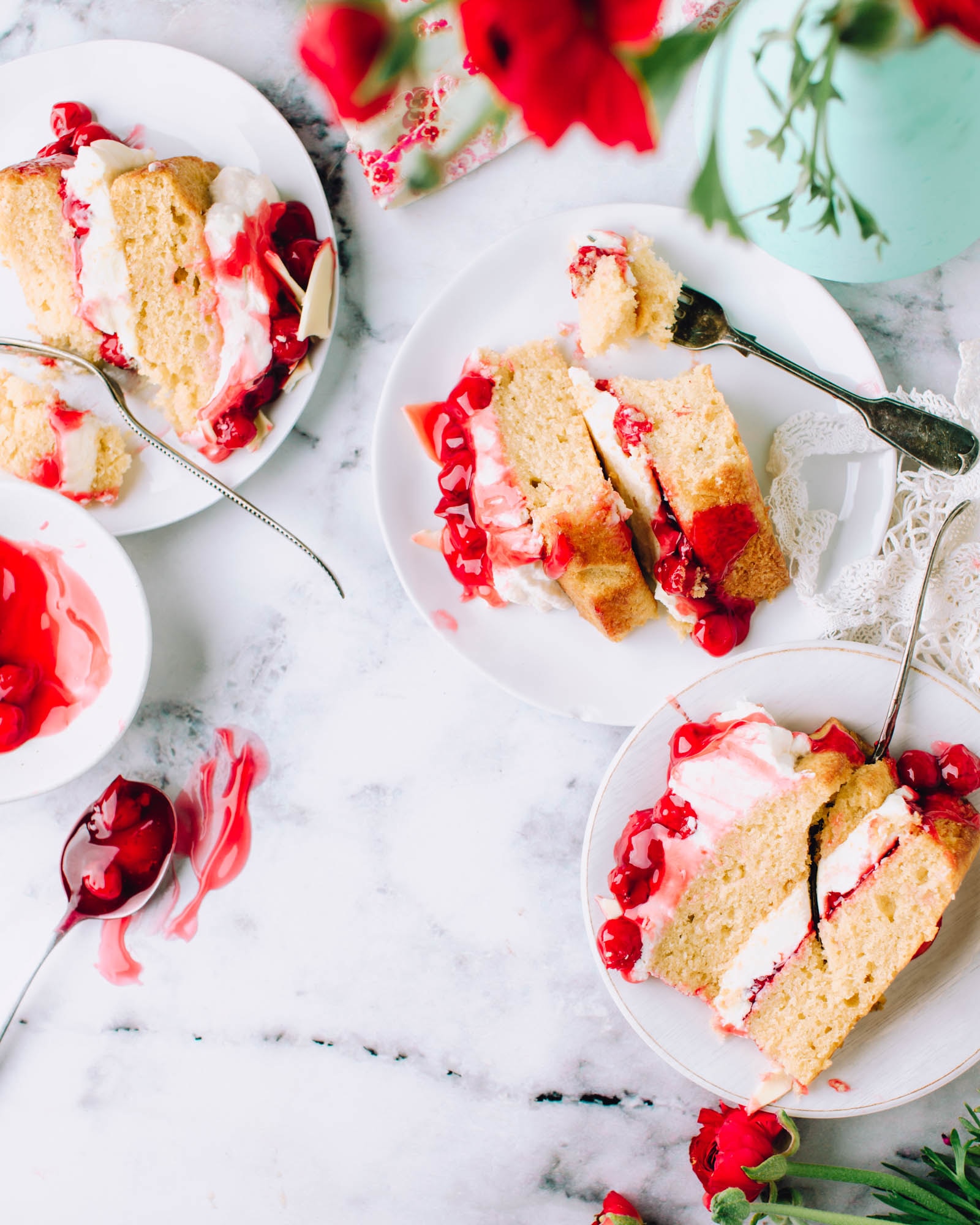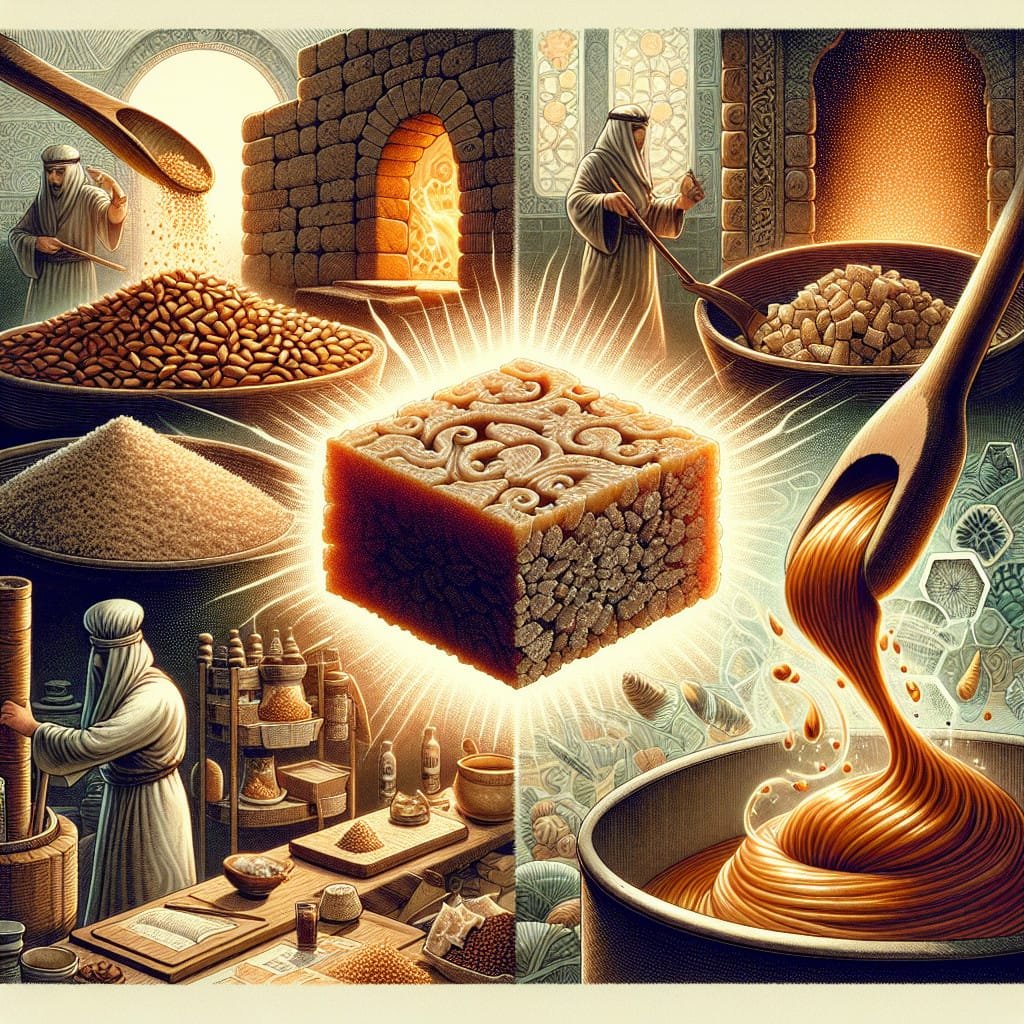In this article, we’ll uncover the secrets to creating Halva, a delectable Middle Eastern treat crafted from the humble sesame seed. Have you ever wondered how this delightful confection is made? Well, wonder no more! With just a handful of ingredients and a touch of culinary flair, you’ll be able to whip up your own batch of Halva in no time. So, roll up your sleeves, grab your mixing bowl, and let’s embark on a sweet adventure together as we explore the art of making Halva.

Ingredients
Sesame Seeds
Sesame seeds are the main ingredient in halva and provide a distinctive nutty flavor and crunchy texture. They are typically lightly toasted before being used in the recipe.
Sweeteners
Halva traditionally uses a sweetener such as honey, sugar, or syrup to provide the desired level of sweetness. This ingredient helps bind the halva together and gives it a luscious, melt-in-your-mouth consistency.
Flavorings
To enhance the flavor of halva, various ingredients can be added. Common flavorings include vanilla extract, cinnamon, cardamom, or rosewater. These additions add depth and complexity to the taste profile of the dessert.
Nuts or Dried Fruits
To add texture and additional flavors, nuts or dried fruits are often mixed into the halva. Common choices include pistachios, almonds, walnuts, or raisins. These ingredients provide a pleasant contrast to the smoothness of the sesame seeds.
Preparation
Toasting the Sesame Seeds
Before starting to make halva, the sesame seeds need to be lightly toasted to enhance their nutty flavor. This can be done by placing the seeds in a dry skillet over medium heat and stirring occasionally until they become golden brown and fragrant.
Making the Syrup
To create the syrup, a sweetener such as honey or sugar is combined with water and heated until dissolved. This syrup acts as a binder and gives the halva its desired texture. The syrup is then set aside to cool slightly before being incorporated into the halva mixture.
Combining the Ingredients
Once the sesame seeds have been toasted and the syrup has cooled, they can be combined. The toasted sesame seeds are added to the syrup along with any desired flavorings, nuts, or dried fruits. The mixture is then stirred together until well combined and the ingredients are evenly distributed.
Types of Halva
Tahini Halva
Tahini halva is one of the most well-known variations of halva and is made primarily from sesame paste, or tahini. It has a moist and crumbly texture, rich sesame flavor, and a delicate sweetness.
Flour Halva
Flour halva, also known as semolina halva or helva, is made using a mixture of flour, butter, sugar, and water. It has a dense and firm texture, often with a slightly grainy consistency, and is popular in many Eastern European and Mediterranean countries.
Semolina Halva
Semolina halva is a type of halva made with semolina flour, butter, sugar, and water. It has a soft and creamy texture, similar to a pudding. A hint of warm spices such as cinnamon or cardamom is often added to enhance its flavor.
Sunflower Seed Halva
Sunflower seed halva is a variation that uses sunflower seeds instead of sesame seeds as the base ingredient. It has a similar texture and taste to the traditional version but offers a unique twist with its distinct sunflower flavor.
Variations
Chocolate Halva
For chocolate lovers, chocolate halva offers a delicious twist on the classic recipe. Cocoa powder or melted chocolate is added to the mixture, creating a rich and indulgent dessert that combines the flavors of chocolate and sesame.
Pistachio Halva
Pistachio halva is a popular variation that incorporates chopped pistachios into the halva mixture. The addition of these flavorful nuts provides a pleasant crunch and vibrant green color to the dessert.
Peanut Halva
Peanut halva is a delightful variation that replaces the sesame seeds with roasted peanuts. This gives the halva a wonderful nuttiness and a slightly different texture while still maintaining the deliciously sweet and rich taste.
Coconut Halva
Coconut halva is a tropical twist on the traditional recipe, combining shredded or desiccated coconut with the other ingredients. The coconut adds a subtle sweetness and provides a chewy texture, making it a favorite among coconut lovers.

Serving and Storage
Serving Suggestions
Halva can be enjoyed in various ways. It can be sliced into pieces and served as a dessert on its own, or it can be crumbled over ice cream or yogurt for added sweetness and texture. It can also be spread on bread or used as a filling for pastries.
Storage Tips
To keep halva fresh, it should be stored in an airtight container at room temperature. When properly stored, it can last for several weeks. However, it is important to note that the texture may slightly change over time, becoming drier and more crumbly.
Health Benefits
Good Source of Nutrients
Halva made from sesame seeds provides a good source of essential nutrients. Sesame seeds are rich in calcium, iron, and magnesium, which are important for bone health and energy production. They also contain fiber and antioxidants.
Rich in Healthy Fats
Sesame seeds are high in monounsaturated and polyunsaturated fats, which are considered heart-healthy fats. These fats can help lower cholesterol levels and reduce the risk of heart disease when consumed in moderation.
Energizing and Filling Snack
Halva is a great snack option for boosting energy levels and satisfying hunger. It provides a good balance of carbohydrates, healthy fats, and protein. The combination of these nutrients helps keep you feeling full and energized for longer periods.

Cultural Significance
Traditional Middle Eastern Dessert
Halva holds a special place in Middle Eastern cuisine and is often associated with special occasions and celebrations. It is a dessert deeply rooted in Middle Eastern culture and is enjoyed across many countries in the region.
Symbolic and Ceremonial
Halva is often served during religious holidays and ceremonies, symbolizing sweetness, abundance, and hospitality. It is a treat that brings people together and signifies the importance of sharing and celebrating.
History
Ancient Origins
Halva has ancient origins, with evidence of its existence dating back thousands of years. It is believed to have originated in the Middle East, with sesame seeds being a staple ingredient in the region.
Spread to Different Cultures
Over time, the popularity of halva spread to various cultures and regions, each adapting the recipe to suit their tastes and ingredients. Today, halva is enjoyed in many countries, including Greece, Turkey, India, and Israel, with each culture adding its own unique twists and flavors.
Modern Popularity
Halva has gained popularity around the world due to its delicious taste and versatility. It is now widely available in specialty food stores and can even be made at home with readily accessible ingredients and recipes.

Halva Recipes
Classic Halva Recipe
Ingredients:
- 1 cup sesame seeds
- 1/2 cup sugar
- 1/2 cup water
- 1/2 teaspoon vanilla extract
Instructions:
- Toast the sesame seeds in a dry skillet over medium heat until golden brown.
- In a saucepan, combine the sugar and water. Heat until the sugar has dissolved.
- Add the toasted sesame seeds to the saucepan and stir well.
- Cook the mixture over low heat, stirring continuously, until it thickens and starts to pull away from the sides of the pan.
- Remove from heat and stir in the vanilla extract.
- Pour the mixture into a greased baking dish or mold and let it cool and set.
- Once cooled, cut into desired shapes and serve.
Vegan Halva Recipe
Ingredients:
- 1 cup tahini
- 1/2 cup agave syrup or maple syrup
- 1/4 cup coconut oil
- 1/2 teaspoon vanilla extract
- Optional: chopped nuts or dried fruits
Instructions:
- In a mixing bowl, combine the tahini, agave syrup or maple syrup, coconut oil, and vanilla extract. Stir until well combined.
- If desired, add chopped nuts or dried fruits to the mixture and stir gently.
- Pour the mixture into a lined baking dish or mold and smooth the top.
- Place in the refrigerator for at least 2 hours to set.
- Once set, cut into pieces and serve.
Gluten-Free Halva Recipe
Ingredients:
- 1 cup sunflower seed butter
- 1/2 cup honey or maple syrup
- 1/4 cup melted coconut oil
- 1/2 teaspoon almond extract
- Optional: gluten-free nuts or dried fruits
Instructions:
- In a mixing bowl, combine the sunflower seed butter, honey or maple syrup, melted coconut oil, and almond extract. Stir until well mixed.
- If desired, add gluten-free nuts or dried fruits to the mixture and stir gently.
- Transfer the mixture into a greased baking dish or mold and press down firmly.
- Place in the refrigerator for at least 4 hours to set.
- Once set, remove from the refrigerator and cut into slices.
Conclusion
Halva is a delicious and versatile sweet that is easy to make at home. Whether you prefer the classic sesame-based halva or want to try out different variations like chocolate, pistachio, or coconut, there is a halva recipe to suit every taste. With its rich history, cultural significance, and numerous health benefits, halva is a dessert that delights the senses and brings people together. So why not give it a try and indulge in the irresistible flavors of this Middle Eastern treat?

